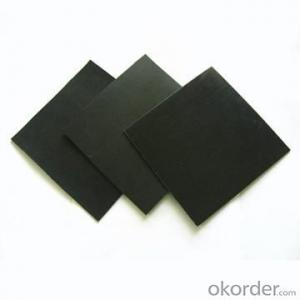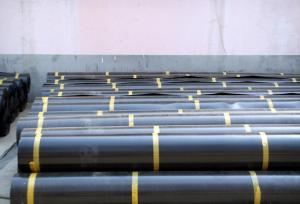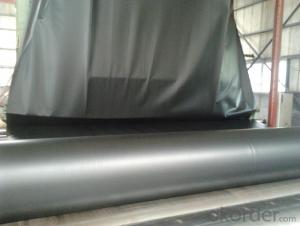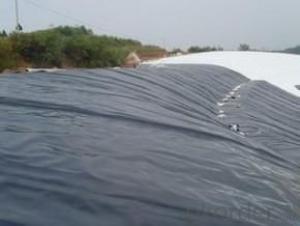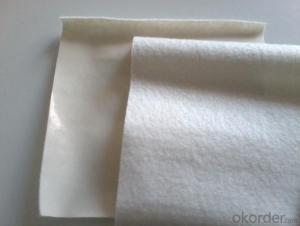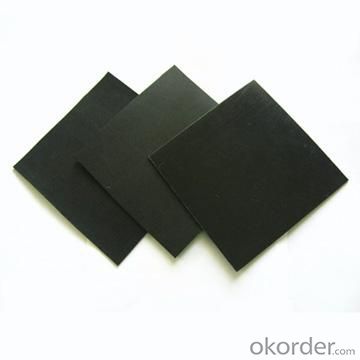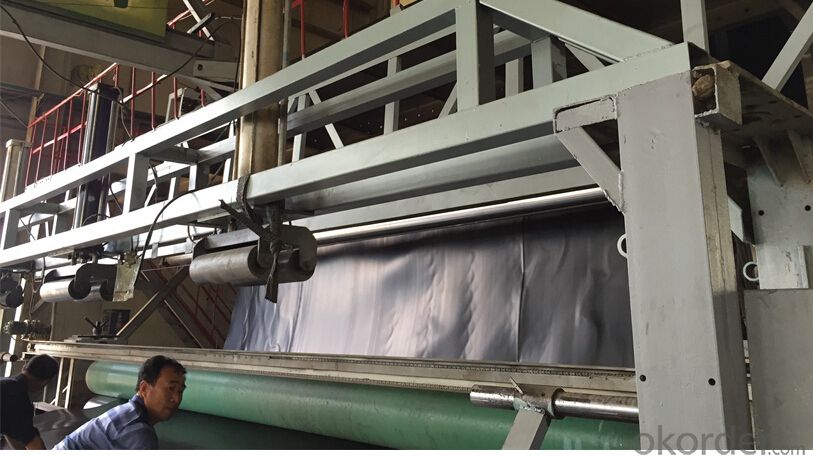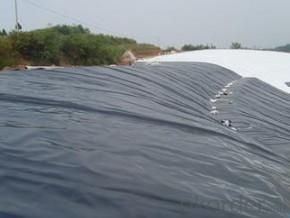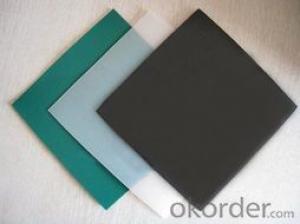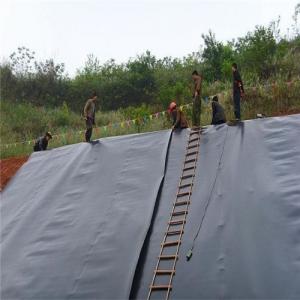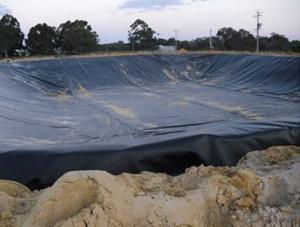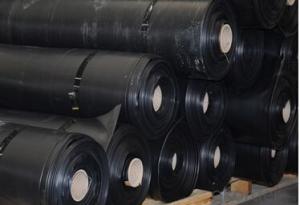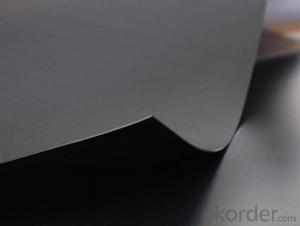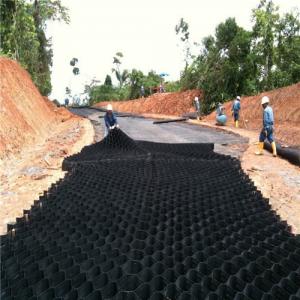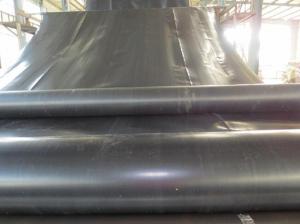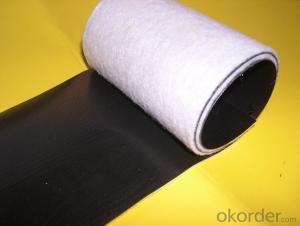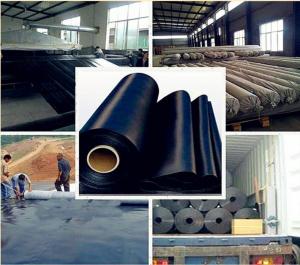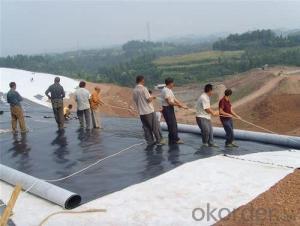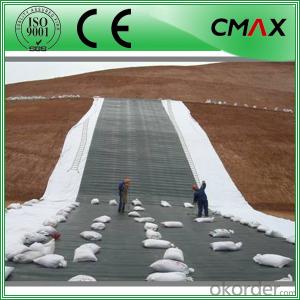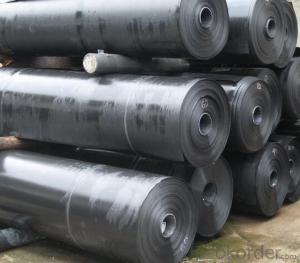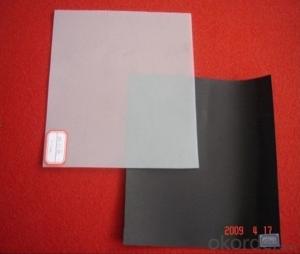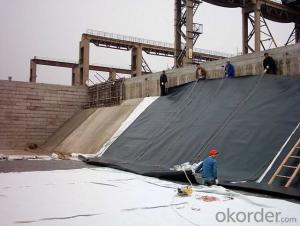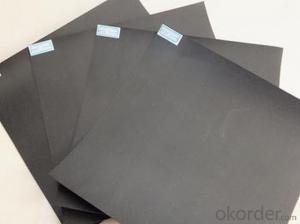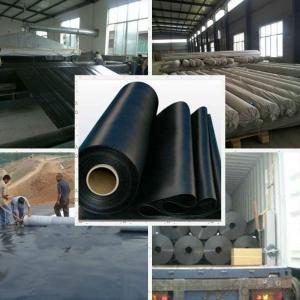HDPE Geomembrane/HDPE Pond Liner/Geomembrane
- Loading Port:
- Qingdao
- Payment Terms:
- TT or LC
- Min Order Qty:
- 10000 m²
- Supply Capability:
- 300000 m²/month
OKorder Service Pledge
OKorder Financial Service
You Might Also Like
Description Of HDPE Geomembrane/HDPE Pond Liner:
Geomembrane is a kind of waterproof material with basic raw material of high molecular polymer. It is mainly divided into LDPE geomembrane, , HDPE geomembrane, and all kinds of composite geomembrane.
Main Features of HDPE Geomembrane/LDPE geomembrane/pond liner:
Complete variety of specifications of width and thickness. Thickness: 0.3-2.5mm/Width: 2-8m .
Excellent environmental stress resistant cracking performance.
Excellent performance of chemical erosion resistance.
Big scope of application temperature and long service life .
Applied in landfill waste site, sewage and filth treatment site, tailings depot and underground construction project
Technical Data Sheet of HDPE Geomembrane/LDPE geomembrane/pond liner:
Properties | GM0.5 | GM0.75 | GM1.0 | GM1.25 | GM1.5 | GM2.0 | GM2.5 |
Thickness | 0.50mm | 0.75mm | 1.00mm | 1.25mm | 1.50mm | 2.00mm | 2.50mm |
Density ( ≥) | 0.940g/cc | 0.940g/cc | 0.940g/cc | 0.940g/cc | 0.940g/cc | 0.940g/cc | 0.940g/cc |
Tensile Properties ( ≥) • yield strength • break strength • yield elongation • break elongation |
7 kN/m 10kN/m — 600% |
10 kN/m 15kN/m — 600% |
13 kN/m 20 kN/m 11% 600% |
16 kN/m 25 kN/m 11% 600% |
20 kN/m 30 kN/m 11% 600% |
26 kN/m 40 kN/m 11% 600% |
33kN/m 50kN/m 11% 600% |
Tear Resistance ( ≥) | 56 N | 84 N | 115 N | 140 N | 170 N | 225 N | 280 N |
Puncture Resistance ( ≥) | 120 N | 180 N | 240 N | 300 N | 360 N | 480 N | 600 N |
Carbon Black Content ( ≥) | 2.0-3.0% | 2.0-3.0% | 2.0-3.0% | 2.0-3.0% | 2.0-3.0% | 2.0-3.0% | 2.0-3.0% |
Carbon Black Dispersion ( ≥) | Note(1) | Note(1) | Note(1) | Note(1) | Note(1) | Note(1) | Note(1) |
Oxidative Induction Time(OIT) Standard OIT ( ≥) |
60 min. |
60 min. |
60 min. |
60 min. |
60 min. |
60 min. |
60 min. |
Specifications of HDPE Geomembrane/LDPE geomembrane/pond liner:
Material:HDPE, LDPE, PVC
Thickness:0.3mm-3.0mm
Width:1.0m-7.0m
Length:100m or as request
Color:black, white
Applications of HDPE Geomembrane/LDPE geomembrane/pond liner:
1.Prevent leakage disposal in waste burying field or waste water or waste dregs disposing field,river bank,lake dam ,mine remainings ,reservior,tunnel,liquid storage ,pool(pit,mine)
2.Preventing leakage in subway ,basement,tunnel ,hole
3.Anti-solt leakage in roadbed and other groundtill
4.The plane direction laying of dam ,the vertical direction laying fou groundtill ,used in the construction fence and waste material field
5.Used in seawater or freshwater feed field
IMages of HDPE Geomembrane/LDPE geomembrane/pond liner:
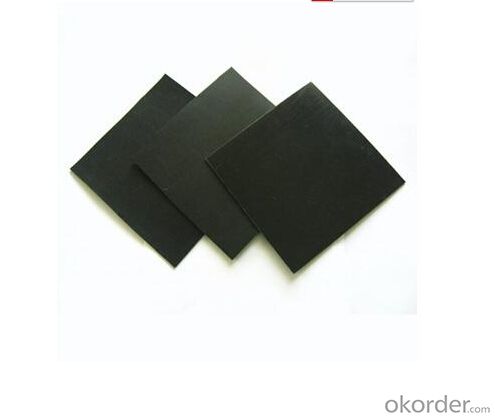
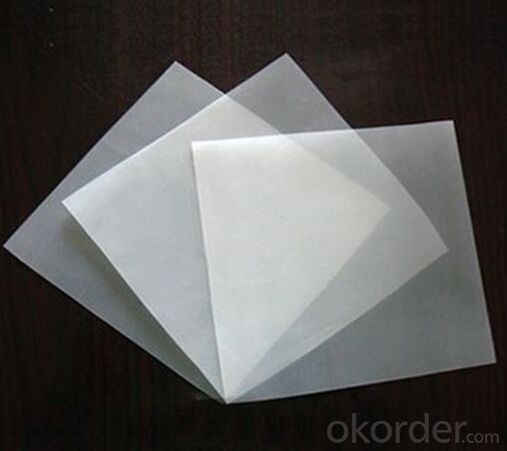
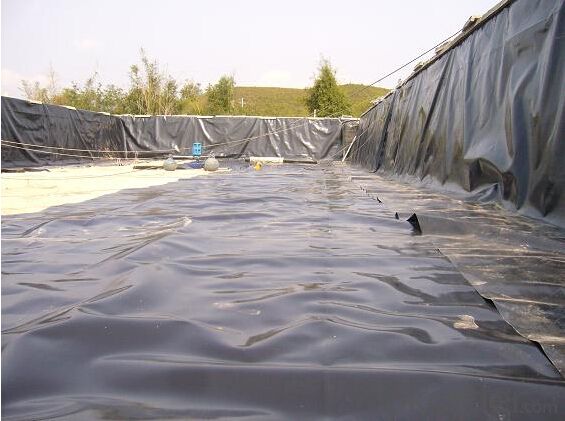
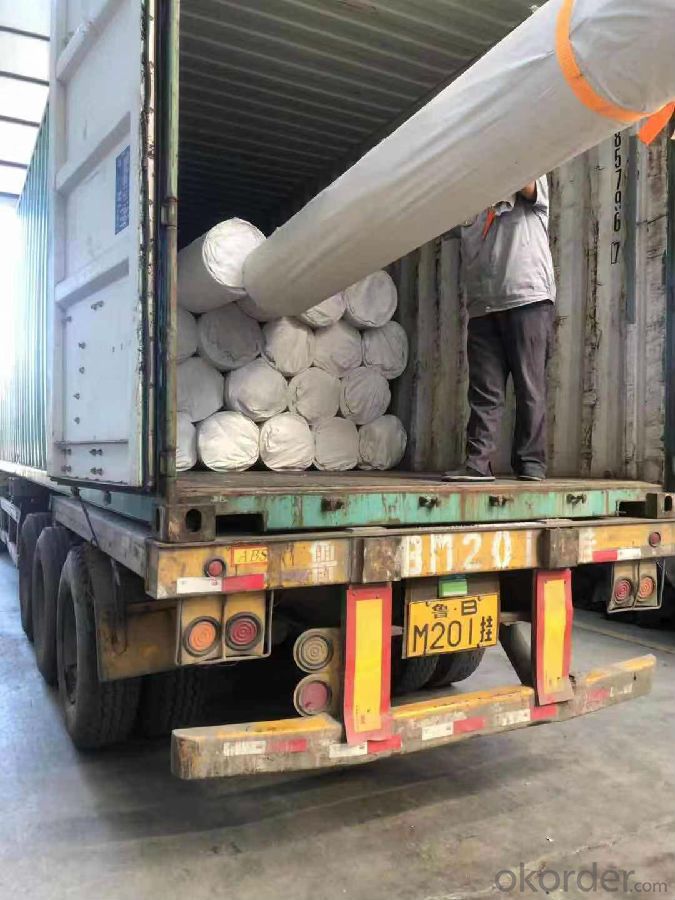
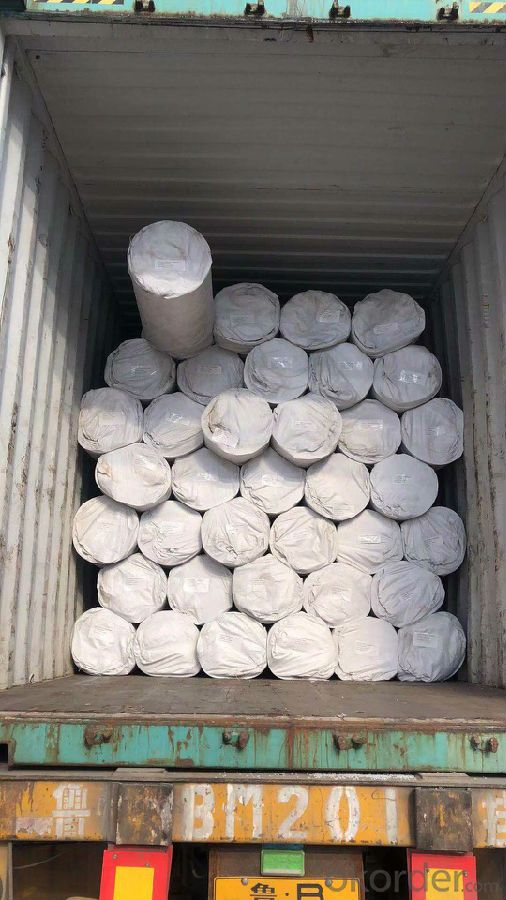
FAQ:
1. Do you supply free samples for customers?
Yes,we will supply free samples for you.Please send your address for us.
2. How Many years experience do you have?
We have been exported to more than 20 countries in the past 15 years.
3. How long do we usually reply your request?
We always reply our customer within 24 hours.
- Q: Can geomembranes be used in potable water applications?
- Yes, geomembranes can be used in potable water applications. They are often utilized as a barrier material in water containment systems to prevent leakage and contamination, ensuring the safety and quality of drinking water.
- Q: What is the role of water-based plastic coated glue
- The water film laminating adhesive is a method for processing the surface of the printed matter to improve the gloss and the intensity of the surface of the printed matter, and to enhance the aesthetic effect. Measure the quality of the film and the quality of the film, but also need to examine the light intensity, strength, bond strength, etc.. The high strength, easy to recycle and no pollution of the water wet film covered with its coated printed matter is favored by the customers.
- Q: How do geomembranes contribute to water storage reservoirs?
- Geomembranes contribute to water storage reservoirs by providing a reliable and impermeable barrier that prevents water seepage and leakage. They help to maintain the water level and quality by minimizing evaporation, contamination, and infiltration. Additionally, geomembranes ensure the structural integrity of the reservoirs by reducing the risk of soil erosion and maintaining the stability of the embankments. Overall, geomembranes play a crucial role in enhancing the efficiency, reliability, and sustainability of water storage reservoirs.
- Q: How are geomembranes tested for durability?
- Geomembranes are tested for durability through a series of rigorous tests that assess their resistance to various environmental factors. These tests include measuring their tensile strength, puncture resistance, UV stability, chemical resistance, and dimensional stability. Additionally, accelerated aging tests are conducted to simulate long-term exposure to harsh conditions. By subjecting geomembranes to these tests, their durability and ability to withstand different conditions can be accurately evaluated.
- Q: home decoration glass insulation film is good or posted stickers decorative film.
- Effect decorative film may be a little better, it looks good; since the insulation film with insulation function, appearance and life may be not better than decorative film.
- Q: Can geomembranes be used in rooftop gardens?
- Yes, geomembranes can be used in rooftop gardens. They are commonly used as a protective barrier between the rooftop and the garden soil, preventing water leakage and root penetration. Additionally, geomembranes can help retain moisture in the soil and provide a stable foundation for plants, making them a suitable choice for rooftop gardening.
- Q: What are the advantages of using geomembranes in chemical storage facilities?
- There are several advantages of using geomembranes in chemical storage facilities. Firstly, geomembranes provide a reliable barrier that prevents the leakage of hazardous chemicals into the environment. They are impermeable to liquids and gases, reducing the risk of contamination and ensuring the safety of workers and nearby communities. Secondly, geomembranes are highly resistant to chemical degradation, making them ideal for containing corrosive substances. They can withstand exposure to a wide range of chemicals without deteriorating, ensuring the integrity of the storage facility over time. Additionally, geomembranes are flexible and can be customized to fit the specific requirements of different storage facilities. They can be easily molded and installed, allowing for efficient construction and minimizing downtime during installation. Furthermore, geomembranes are durable and have a long lifespan. They can withstand extreme weather conditions, UV radiation, and mechanical stress, providing long-term protection for chemical storage facilities. Overall, the use of geomembranes in chemical storage facilities offers numerous advantages, including reliable containment, chemical resistance, flexibility, and durability, ultimately enhancing safety and protecting the environment.
- Q: Water conservancy geotechnical membrane pe50 - 200 - 3 is what mean
- Thickness and weight
- Q: Design materials of geomembrane
- embedding. Highway anti-seepage treatment, take minimum seams of construction as principle: the central median when the lower part Impervious generally use a cloth membrane 200-300g / m. Based on the water pressure requirements of engineering design. When the base layer is concrete structure, the construction conditions, to determine the width and length of geomembrane:. // F, to determine the thickness of the geomembrane, climate conditions:. // F, construction capacity. According to the actual size, life and other application conditions of the project, and according to the project nature exposure, the application site.
- Q: Which is better for ceramic film and silk film high pitched voice?
- Ceramic membrane is better, it is soft and delicate silk film sound, you won't be tired after longtime listening, and it is transparent clear and has high sensitivity. Price is also very affordable.
Send your message to us
HDPE Geomembrane/HDPE Pond Liner/Geomembrane
- Loading Port:
- Qingdao
- Payment Terms:
- TT or LC
- Min Order Qty:
- 10000 m²
- Supply Capability:
- 300000 m²/month
OKorder Service Pledge
OKorder Financial Service
Similar products
Hot products
Hot Searches
Related keywords
